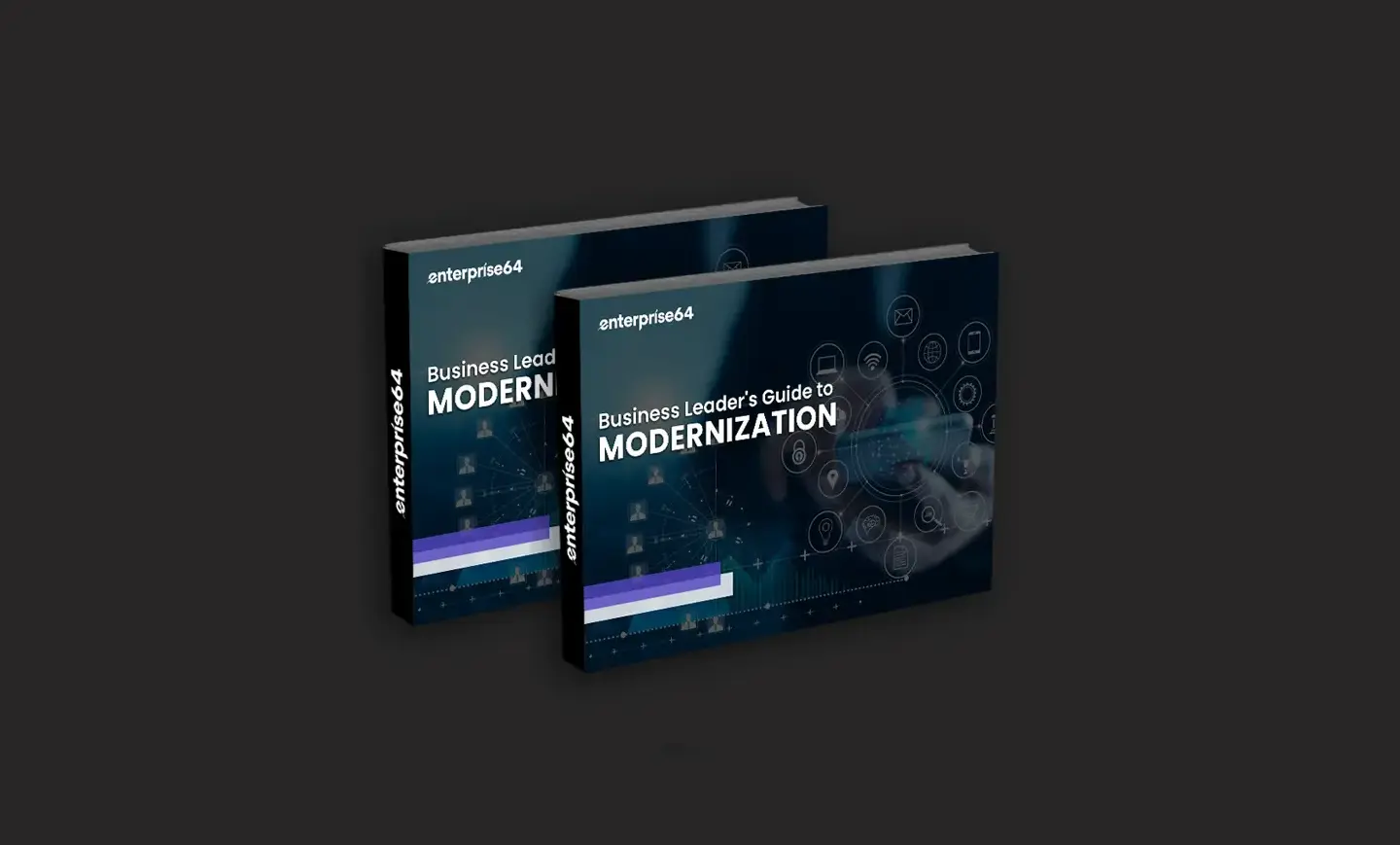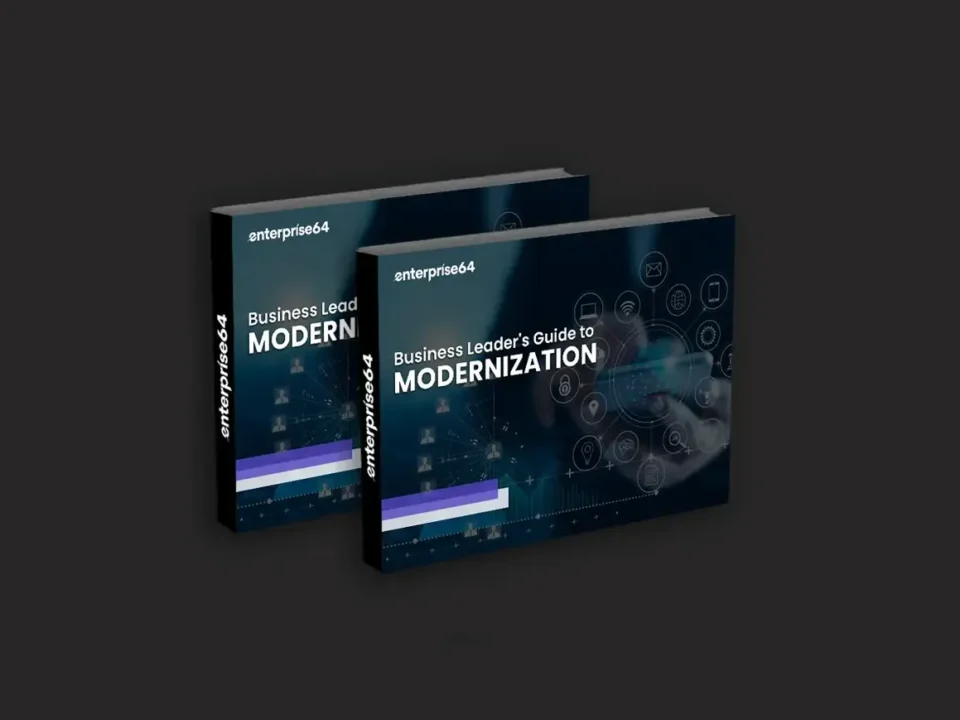How does the idea of leaving behind your outdated legacy systems and opting for application modernization technology sound?
In this blog, I’ve covered the basics of application modernization, why businesses should consider new systems, the challenges associated with transitioning from legacy to modernization, and the best practices involved.
What is Application Modernization Technology?
As the name suggests, application modernization refers to updating or modernizing an organization’s systems, applications, and architecture to cloud-based solutions.
The primary aim is to improve your application’s performance to deliver value.
Consider a retail company using a decade-old inventory management system that lacks mobile accessibility. To modernize, they’ll migrate the system to the cloud for better scalability and reduced costs.
The application will be refactored into a microservices architecture, enabling faster updates and AI-powered analytics integration for real-time inventory tracking and demand forecasting.
This application modernization technology will improve operational efficiency, reduce downtime, and enhance customer satisfaction.
Why Do You Need Application Modernization?
According to MarketsandMarkets, the application modernization market is expected to reach $39.62 billion by 2029. We can conclude that businesses are rushing toward cloud solutions to meet the dynamic demands of their industry and consumer base.
So why must businesses eventually shift from legacy systems to more modern alternatives?
Difficult maintenance and upkeep
Legacy systems are typically built on now-unsupported technologies, making them harder to update or repair.
Additionally, their codebase is often stuffed with inconsistencies and outdated practices, demanding considerable effort to debug or modify.
The lack of experienced personnel on board or appropriate documentation further escalates the challenge.
For instance, a hospital’s patient management software, written in an outdated language like Pascal, requires hiring rare coders to resolve recurring system crashes. Such challenges in maintenance and upkeep increase downtime and costs.
Limited scalability
Legacy systems are usually designed to handle specific types of tasks or user capacities, making them incapable of adapting to versatile workloads.
This lack of flexibility limits business expansion due to system failures when usage exceeds capacity.
For example, an ecommerce platform using an outdated database architecture struggles to handle the drastic increase in traffic during Black Friday or Christmas sales, leading to lost revenue and unhappy customers.
Vulnerable to security threats
Regarding security measures, legacy applications often lack encryption, multi-factor authentication, or regular security patches, making them easy targets for hackers.
Such security threats are particularly risky in industries where sensitive customer or company data is prioritized.
If a legacy banking application experiences a ransomware attack due to outdated encryption protocols, it risks jeopardizing customer trust and regulatory compliance.
Integration challenges
Legacy applications are not easily compatible with newer tools, systems, or APIs, which can add delays when trying to adopt modern technologies.
Moreover, this incompatibility can affect automation and workflows or even prevent your team from building an efficient ecosystem.
Suppose a manufacturing company sees that its legacy ERP software cannot integrate with modern IoT devices. Such prevention will stop real-time inventory tracking and consequently delay production decisions.
High maintenance costs
A telecom company must spend fortunes on COBOL programmers to maintain its legacy billing system because young and inexperienced IT guys have little knowledge of a high-level, procedural language like COBOL.
Maintaining legacy systems is an expensive prospect. The jobs become increasingly costly as skilled professionals who understand these older technologies are harder to find.
This growing dependency automatically shrinks the talent pool, escalates costs, and causes delays.
Outdated user experience
Would you like to use a travel booking app with a dated, slow-loading interface and non-intuitive navigation for your next family vacation? I don’t, either!
Poor design and slow performance frustrate users, leading to dissatisfaction, decreased engagement, and customer churn. This will cause a sharp decline in users, who will switch to competitors offering sleek, mobile-friendly designs.
Apparently, more of a reason why application modernization technology is a must-approach now.
Misalignment with business transformation goals
Today, businesses are often demanded to adopt new models, integrate advanced technologies, or undergo digital transformation.
Legacy systems are often not flexible enough to support these transitions, halting innovation and limiting growth opportunities.
For example, if the POS system of a retail chain cannot support online and offline inventory synchronization, its effort to transition to an omnichannel strategy will fail, leading to inefficiencies and revenue loss.
Handpicked content: Why Businesses Cling to Legacy Systems (And Why They Shouldn’t)
Application Modernization Challenges
Modernizing legacy applications isn’t as easy as it sounds. They come with their share of challenges, from preliminary work to execution and post-modernization.
Below, I’ve outlined the most common challenges and brief examples to provide context.
Technical debt
Legacy systems accumulate technical debt due to obsolete programming languages, frameworks, and libraries. And sorting out this debt requires considerable resources and expertise.
Using the earlier example of COBOL, a financial institution relying on the system struggles to find developers to maintain it, causing delays in deploying new features.
Integration issues
Integration is one of the most common and significant application modernization technology challenges.
Legacy applications are often tightly integrated with other systems using outdated technology, making it difficult to decouple and ensure continued functionality across the system.
Risky data migration
Moving data from old systems to new platforms risks data loss, corruption, or compatibility issues, requiring careful planning and tools.
For example, an ecommerce company migrating consumer data to a cloud-based CRM system is plagued by mismatched data formats, causing delays and requiring further cleanups.
Skill shortages
Finding expertise to manage and modernize legacy systems is never easy for IT executives. Fresh graduates and most experienced professionals you’ll meet are trained in modern technologies but lack the skill set to handle legacy architectures.
For instance, a government agency using a legacy tax calculation system struggles to find professionals well-versed in its proprietary programming language.
Resistance to change
Employees familiar with old systems may resist getting their hands on new technologies, requiring change management programs to familiarize them with new workarounds and ease the transition.
The employees at a manufacturing company may not be happy with a modern inventory management tool, preferring their manual, paper-based processes.
Regulatory and compliance issues
A healthcare provider upgrading its billing system may face hurdles in complying with HIPAA regulations during and after the transition.
Legacy systems often operate under strict regulations and compliance frameworks. Unlike their counterparts, modern applications don’t easily adhere to such regulations without disrupting operations and services and risking legal proceedings.
Security vulnerabilities
Legacy applications often come with hidden security vulnerabilities, needing extra modernization efforts to include comprehensive security updates.
For example, a financial institution’s outdated customer portal is exposed to modern cyberattacks due to unsupported encryption methods.
Downtime and business disruption
Minimizing downtime during modernization tasks is essential but often unavoidable. Such activities can disrupt operations and cause revenue loss.
Consider you own a logistics company, and experiencing a 12-hour system outage while migrating to a new fleet management platform will likely delay deliveries and disappoint your customers.
Scalability and flexibility concerns
Legacy systems are not designed for modern scalability and flexibility, making it difficult to adapt to evolving business needs.
This is particularly important for mid-market companies that are about to expand and cannot afford to mismanage the increasing number of customer accounts.
Therefore, before creating an application modernization roadmap, you must examine if your business is suffering from any of the above challenges that need acknowledgment.
Best Practices to Drive Application Modernization
Application modernization technology comes with certain best practices, including strategic planning, careful evaluation, and execution.
Make the most of microservices
According to Fortune Business Insights, the global cloud microservices market, valued at $1.54 billion in 2023, is expected to reach $8.33 billion by 2032. The rise in market size indicates the increasing adoption of modular components and services.
Shifting to a microservices architecture helps businesses through scalability, agility, and maintainability.
In short, by dividing applications into smaller, independent services, each with its own logic and database, microservices allow updates, scaling, or replacements of specific components without impacting the entire system.
Teams using microservices reduce reliance, enhance fault tolerance, and support faster development cycles by allowing users to work on separate services simultaneously.
Identify applications to modernize
Despite all the buzz about modernization, it’s equally important to acknowledge that not all applications require immediate modernization.
Start by evaluating and prioritizing tools based on their risks, benefits, and value to the organization. Select and work on applications that promise the most impact on workforce performance, business scalability, and operational efficiency.
Your team can use a scoring system to evaluate applications based on cost, complexity, user impact, and ROI. In other words, prioritize high-value applications to optimize resources.
Leverage cloud computing
Cloud application modernization is a separate discussion in itself, given the impact and increasing adoption of cloud platforms in the digital business today.
Cloud migration, one of the most significant application modernization strategies, offers scalability, cost efficiency, and improved disaster recovery capabilities.
However, successful implementation requires a well-thought strategy to align with organizational goals.
You can start by selecting the most appropriate cloud model, such as public, private, or hybrid, based on your business needs.
Second, re-architect legacy applications for cloud-native compatibility instead of relying on lift-and-shift migration—shifting applications and data from on-premises to the cloud with minimal changes.
Importantly, ensure robust security measures to protect sensitive data in the cloud.
Keep track of performance metrics
New, robust applications require continuous monitoring to see if they deliver the planned outcomes.
Use different tools to measure performance metrics at both the code and infrastructure levels, including cloud services, databases, and networks.
Handpicked content: The Role of Technology Modernization in Digital Transformation
Summing It Up!
Application modernization is no longer optional but a necessity for businesses looking to stay competitive in the global tech industry.
By addressing the challenges of legacy systems and embracing modern technologies like microservices and cloud computing, organizations can enhance scalability, security, and operational efficiency.
Companies can also seek out application modernization services to better understand their needs and how to simplify business growth through technology partnerships.
Last, in future blogs, I’ll also cover the application modernization roadmap and process in detail for businesses looking to get started.











